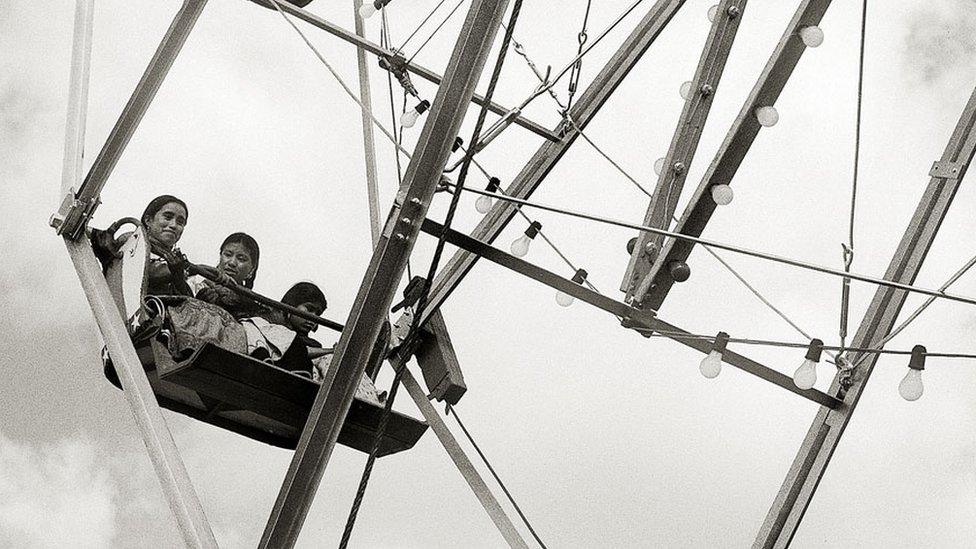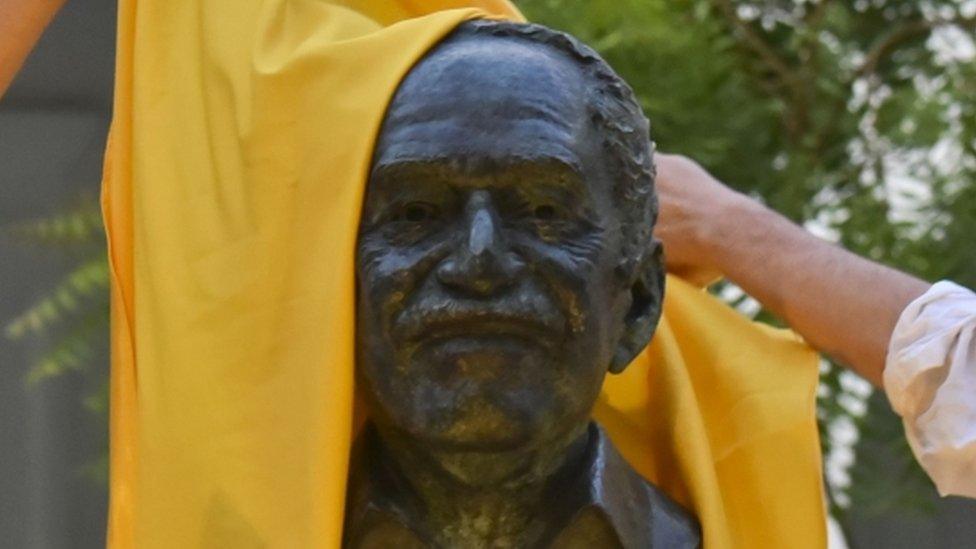Juan Rulfo: The great Latin writer you may want to know about
- Published

Writer and photographer Juan Rulfo was born in the western state of Jalisco on 16 May 1917
Writers and critics say he was one of Latin America's most influential writers, and yet Mexico's Juan Rulfo is far from a household name in the English-speaking world, writes Irene Caselli.
"I think it is a tragedy," Douglas J Weatherford, associate professor at Brigham Young University, Utah, told the BBC. "He is one of the great writers of the Americas."
A series of international events have been organised this year to mark the 100th anniversary of his birth, and to reintroduce - or introduce - him to readers.

A keen photographer, the author (pictured) took pictures around Mexico when he worked as a travelling salesman
His first novel, Pedro Paramo, a 1955 tale of a man discovering a ghost town, is compulsory reading in schools around the Spanish-speaking world.
Thought of as one of the forerunners of the magical realism genre, it has also had plenty of high-profile fans.
US writer Susan Sontag called it "one of the masterpieces of 20th-Century world literature", while Colombian Nobel laureate Gabriel García Márquez said that he could recite the book by heart and that it influenced his own masterpiece, One Hundred Years of Solitude.
García Márquez, who lived in Mexico for many years, also worked on a screenplay for The Golden Cockerel, Rulfo's second novel, a book that has been released in English for the centenary.

He took this action shot on the set of 1956 film La Escondida, when working as its historical adviser and photographer

He also photographed leading lady, María Félix, a star of Mexico's golden age of cinema
Other celebratory plans include an exhibition in Mexico of the Rulfo's photographs, and a seven-part biopic documentary, by Juan Carlos Rulfo, the youngest of the author's four children.

This photograph was taken during the filming of 1960's El Despojo, a feature film Rulfo wrote
After his death in 1986, the Juan Rulfo Foundation was founded. The organisation holds thousands of his photographs.
He was particularly fond of taking pictures of the Mexican countryside, indigenous people and archaeological ruins.

Indigenous people were fundamental in Rulfo's life. From 1962 until his death in 1986, he worked at the National Institute for Indigenous People

He also liked capturing the country's archaeological heritage, including this site in Castillo de Teayo, Veracruz, taken around 1950
All photographs by Juan Rulfo
- Published14 June 2016

- Published23 May 2016

- Published3 November 2016
